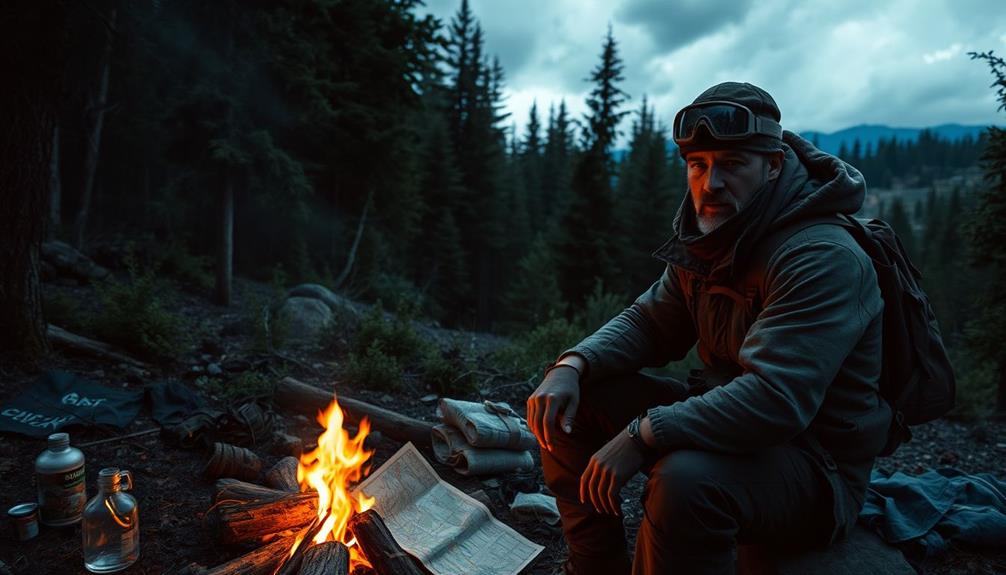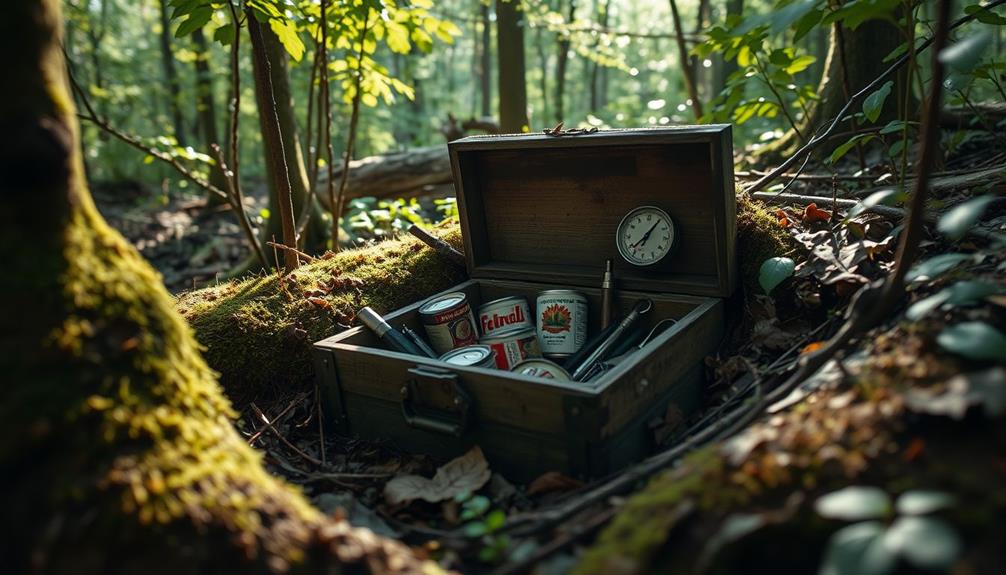To secure your digital data before a crisis strikes, start by identifying vulnerabilities through regular risk assessments. Limit access rights based on necessity and practice strong password management, including unique passwords and multi-factor authentication. Keep your software updated to close off potential vulnerabilities, and utilize both cloud and physical backups for data redundancy. Train your employees on cybersecurity practices to build awareness against threats like phishing. Finally, have a crisis communication plan in place to guide your response. There's much more you can do to stay ahead of threats and protect your data effectively.
Key Takeaways
- Conduct regular risk assessments to identify vulnerabilities and implement targeted protection strategies for your digital systems.
- Regularly update security protocols and software to patch known vulnerabilities and reduce the risk of cyberattacks.
- Utilize strong password practices, including unique passwords and multi-factor authentication, to enhance account security.
- Implement effective data protection strategies, including cloud storage, physical backups, and encryption for sensitive information.
Understanding Cyberattacks
Cyberattacks are deliberate attempts by malicious actors to breach your systems, aiming to steal, alter, or destroy your valuable information.
You must be aware that cyber criminals employ various tactics, including malware, Denial of Service (DoS) attacks, and phishing schemes, to achieve their goals. Malware can infiltrate your network, while DoS attacks disrupt your operations by overwhelming your resources. Phishing often masquerades as trusted sources to trick you into revealing sensitive information, making it vital to stay vigilant.
Data breaches can lead to severe consequences, both financially and reputationally. Understanding these tactics is the first step toward fortifying your defenses.
Implementing robust security measures is essential. Regular software updates, firewalls, and antivirus programs can help keep cyber threats at bay. Training employees to recognize phishing attempts and suspicious activities can also play a significant role in your defense strategy.
Importance of Risk Assessment

When you conduct regular risk assessments, you can identify vulnerabilities in your systems that could leave you exposed.
Evaluating access control measures helps guarantee only the right people have the right access to sensitive information.
Identify Vulnerabilities in Systems
Regularly reviewing risks helps you pinpoint vulnerabilities in your systems, enabling you to implement targeted protection strategies. Conducting thorough risk evaluations is essential for enhancing data security. By analyzing your unique operational context, you can identify specific digital security vulnerabilities that could be exploited by cyber threats.
Make sure your evaluations include a detailed assessment of your equipment, software, access levels, and email service hosts. This process helps uncover potential weaknesses that might otherwise go unnoticed. It's also important to identify activities linked to IT product and service vulnerabilities, allowing you to address possible threats before they materialize.
Consider implementing separate risk evaluations for each IT product and service you use. This approach greatly reduces the likelihood of successful cyberattacks. Additionally, regularly reviewing and updating your security measures based on your risk evaluation findings is essential.
Evaluate Access Control Measures
Evaluating access control measures is essential for guaranteeing only authorized personnel can access sensitive data, which protects your organization from potential breaches. To enhance your security posture, conduct regular risk assessments that include reviewing user permissions. This process helps identify unnecessary access rights that could expose your organization to threats.
Implementing the principle of least privilege guarantees users have access only to the data necessary for their roles. Monitoring access logs can reveal unusual activity patterns or unauthorized attempts, allowing for timely responses to potential issues.
Here's a table summarizing key elements of access control evaluation:
| Access Control Measure | Importance |
|---|---|
| User Permission Review | Detects unnecessary access rights |
| Principle of Least Privilege | Reduces insider threats |
| Access Log Monitoring | Identifies unusual activity |
| Periodic Reviews | Adapts to changes in personnel |
Regularly Update Security Protocols
Updating security protocols is crucial for staying ahead of evolving cyber threats and ensuring your organization remains resilient against potential attacks. With 90% of successful cyber-attacks exploiting known vulnerabilities, timely software updates are critical. By regularly evaluating your risks, you can identify specific digital security weaknesses unique to your organization, allowing you to implement proactive measures that protect sensitive data.
Conducting these evaluations at least annually is a best practice. Studies show that organizations that routinely review and update their security measures can cut the likelihood of cyberattacks by up to 50%. During these assessments, make sure to examine your equipment, software, access levels, and email service hosts. This thorough approach helps you pinpoint vulnerabilities linked to your IT products and services.
Additionally, continuous monitoring and regular updates not only safeguard your data but also promote a culture of cybersecurity awareness within your team. This culture is essential for building organizational resilience, especially in times of crisis. By prioritizing regular updates to your security protocols, you're not just reacting to threats; you're proactively fortifying your defenses and ensuring long-term security success.
Effective Data Protection Strategies

To effectively protect your digital data, implement a robust strategy that combines reliable storage solutions with regular backups. This guarantees your data protection measures are both thorough and effective.
Consider the following strategies:
- Utilize both cloud storage and physical backups to create redundancy against data loss or corruption.
- Define access control measures to restrict employee access rights to sensitive data, minimizing unauthorized access and potential breaches.
Additionally, regularly encrypt data exchanged via email to enhance security. This guarantees sensitive information is only accessible to intended recipients.
Don't forget to conduct periodic testing of your backup recovery processes. This practice guarantees that you can restore your data quickly and effectively in the event of a crisis.
Cyber Hygiene Practices

Maintaining good cyber hygiene involves consistently applying best practices to protect your digital environment from evolving threats. By adopting these practices, you can minimize security risks and keep your personal information safe.
| Action | Importance |
|---|---|
| Regular Software Updates | Patches vulnerabilities, reducing entry points for cyberattacks. |
| Strong Password Practices | Unique, complex passwords with 2FA enhance account security. |
| Data Backup Strategy | Safeguards against data loss in case of a cyber incident. |
Make sure to regularly update all software and operating systems. Outdated software can be a considerable entry point for cyberattacks. Implement strong password practices by using unique and complex passwords for each account, and enable two-factor authentication (2FA) to further enhance your security.
Additionally, maintain a reliable data backup strategy by frequently backing up critical files to secure locations, both in the cloud and on physical drives. This approach will help you safeguard your personal information during a cyber incident. By following these cyber hygiene practices, you'll considerably reduce your exposure to security risks and protect your digital assets.
Employee Awareness Training

Integrating employee awareness training into your cybersecurity strategy enhances the protection provided by good cyber hygiene practices. Regular training sessions on cybersecurity best practices can greatly reduce the chances of successful cyberattacks. When your team knows how to identify potential threats, they become your first line of defense.
Consider incorporating these key elements into your training:
- Simulated phishing exercises: These help employees recognize and respond effectively to real phishing emails.
- Clear guidelines: Teach your staff how to verify the legitimacy of emails and avoid suspicious links, given that over 90% of successful attacks start with phishing.
Fostering a culture of security awareness encourages employees to report suspicious activities, creating a proactive environment for protecting your organization's data.
The more informed your employees are, the better they'll be at safeguarding sensitive information. Prioritize employee awareness training to empower your team and strengthen your cybersecurity posture.
Crisis Communication Protocols

A well-defined crisis communication protocol is vital for effectively managing cyber incidents and minimizing disruption within your organization. To prepare for a potential data breach, establish a crisis communication plan that includes a dedicated crisis response team. This team should comprise members from management, communications, legal, quality management, and IT departments for a coordinated approach.
Develop extensive contact lists and establish alternative communication channels to guarantee timely updates during a crisis. Miscommunication can worsen the situation, so it's imperative that employees receive information directly from leadership. This will help prevent confusion and mistrust, and provide clear guidance on the actions they should take.
Transparency is key; share incident details and your mitigation strategies with employees. Frequent updates can alleviate uncertainty and reduce anxiety throughout the response process.
Equip mid- and lower-level managers with effective communication protocols and talking points to relay information smoothly. This guarantees everyone is informed and empowered to address employee concerns, maintaining trust and fostering a united front during crisis response efforts.
Password Management Tips

Effective crisis communication is important, but securing your digital data starts with strong password management practices. To protect your accounts, you should implement a few essential strategies.
First, you should use unique passwords for each account. Reusing passwords increases the risk of multiple accounts being compromised if one gets breached.
Consider using a password manager to create and store complex passwords. This tool makes it easier to maintain strong, unique credentials for all your accounts. Aim for passwords that are at least 16 characters long, mixing letters, numbers, and symbols.
To further enhance your security, enable Multifactor Authentication (MFA). This adds an extra layer of protection, greatly reducing the chances of unauthorized access, even if your password is compromised.
Here are some quick tips to strengthen your password management:
- Regularly change your passwords, especially after a data breach.
- Avoid using easily guessable information like birthdays or names.
Secure Device Practices

Securing your devices is essential for protecting sensitive information from unauthorized access and cyber threats. To enhance your secure device practices, start by setting your devices to auto-lock after a short period of inactivity. This simple step can prevent unauthorized access when you leave your device unattended.
Regularly update your operating systems and applications to patch vulnerabilities. Outdated software can often be a significant entry point for cyberattacks. Additionally, install reputable antivirus software and perform regular scans to detect and eliminate malware that could compromise your personal data.
Using strong passwords and biometric locks adds security to your devices, creating multiple layers of protection against unauthorized access.
Consider enabling remote wipe capabilities through Mobile Device Management (MDM) solutions. This feature allows you to erase sensitive information if your device is lost or stolen.
Online Transaction Safety

When you're shopping online, it's essential to prioritize your transaction safety.
Always choose secure payment methods and keep an eye on your bank statements for any unusual activity.
Plus, steer clear of public Wi-Fi to protect your sensitive information from potential threats.
Secure Payment Methods
Choosing secure payment methods like credit cards or PayPal can greatly enhance your online transaction safety. These options not only provide fraud protection but also offer dispute resolution services for unauthorized transactions. By utilizing these secure payment methods, you can protect your financial information from potential cyberattacks.
Here are a few tips to keep in mind while making online purchases:
- Always check for HTTPS: Verify the website URL starts with HTTPS; this means your connection is secure and encrypted.
- Avoid public Wi-Fi: Conducting transactions on public networks can expose your data. If you must, use a VPN to encrypt your connection.
Monitor Transactions Regularly
Monitoring your transactions regularly is essential for maintaining your online transaction safety and quickly spotting any unauthorized charges. By reviewing your bank statements and transaction histories often, you can identify suspicious activities before they lead to significant financial losses.
Set up mobile banking alerts to notify you of transactions as they happen, allowing you to take immediate action if you see any unauthorized transactions. Aim to review your online transaction records at least once a week. This practice helps guarantee accuracy and lets you catch discrepancies early.
Maintaining a personal finance log is another effective strategy; it allows you to keep track of your purchases and subscriptions, making it easier to spot unfamiliar charges that could indicate fraud.
You might also consider using identity theft protection services. These services can monitor your financial accounts and alert you to any unusual activity, providing an extra layer of security for your online transactions.
Avoid Public Wi-Fi
Accessing sensitive information or making online transactions over public Wi-Fi can put your data at serious risk. These networks are often unsecured, making it easy for cybercriminals to intercept your information. To protect yourself, it's essential to follow some best practices when using public Wi-Fi.
Use a VPN: A Virtual Private Network encrypts your internet connection and helps shield your personal devices from prying eyes.
Avoid clicking on unknown links: Be cautious of ads or links that may pop up while connected to public Wi-Fi; they could lead to phishing sites.
Disable file sharing: Make sure to turn off file sharing and set your device to non-discoverable to minimize unauthorized access.
Even with precautions, it's wise to monitor your online accounts closely after using public Wi-Fi. Keep an eye on your bank statements for any suspicious activity.
Backup and Recovery Solutions

Establish a robust backup and recovery solution to safeguard your digital data from unexpected loss or corruption. Start by implementing a reliable data backup strategy that combines both cloud storage and physical backups. This redundancy is vital in protecting against data loss or corruption, ensuring you've got copies of your sensitive information.
Automate your backup processes to maintain consistency and reduce the risk of human error. Set regular intervals for backups based on how often your data changes. It's also essential to periodically test your backup recovery processes. This guarantees that you can effectively restore your data during a crisis, confirming that your backup files are both intact and accessible.
To enhance security, encrypt your backups. This protects your sensitive information from unauthorized access and adds an extra layer of security. Additionally, maintain a separate environment for your backups, keeping them disconnected from your core network. This measure helps protect against ransomware and other cyber threats that target your primary systems.
Conclusion
In today's digital landscape, it's essential to take proactive steps to secure your data before trouble knocks at your door.
By understanding potential threats and adopting effective protection strategies, you're setting yourself up for success. Remember, an ounce of prevention is worth a pound of cure.
Stay vigilant with cyber hygiene, train your employees, and prioritize secure practices. By doing so, you'll not only safeguard your information but also foster a culture of security that minimizes risks.










